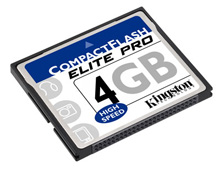 Nintendo’s WiiWare channel is reported to be doing well (says Nintendo) and their Virtual Console games continue to invoke nostalgic downloads. Now, as Networked based gaming slowly starts to crawl on the console Nintendo has begun to realize they’re going to hit some storage issues.
Nintendo’s WiiWare channel is reported to be doing well (says Nintendo) and their Virtual Console games continue to invoke nostalgic downloads. Now, as Networked based gaming slowly starts to crawl on the console Nintendo has begun to realize they’re going to hit some storage issues.
The 512MB of internal flash memory is a bit lacking, especially considering you can purchase a 2GB flash drive for under USD $50.00 in todays market. While Sony and Microsoft work to increment their disk capacities in 20GB intervals Nintendo’s still trying to figure out how to solve their internal storage issues.
Although we initially heard that geeks would be the ones to hit the storage limitations Nintendo’s North American President and COO is readily admitting the pending issue, “we have a consumer base who loves virtual console. We have a userbase who really is enjoying WiiWare content. So for us really our challenge really is how do we satisfy all these consumers who are loving all of the product we make available on a download basis?”
The challenge in being a Japanese based company is understanding how American users consume your product. We’re much more likely to download content and spend money on products we’ve purchased 20 years ago. This is why we’ve got an American based Nintendo HQ to understand the ways of American thinking and trending.
While Nintendo Europe’s Europe’s Laurent Fischer sees only “geeks and otaku” utilizing the minimal disk capcity we here in the States can consume this space overnight. Imagine if we had downloadable content for Rock Band or Guitar Hero to pull down and play!?
As this becomes, as Reggie put it, a “mainstream problem” Nintendo is going to find their harder core demographic moving to other consoles that do it right and allow for expandability. There is a reason, after all, the other consoles cost a bit more to buy.
(Thanks, IGN)


0 thoughts on “Nintendo’s Wii Storage Issues”